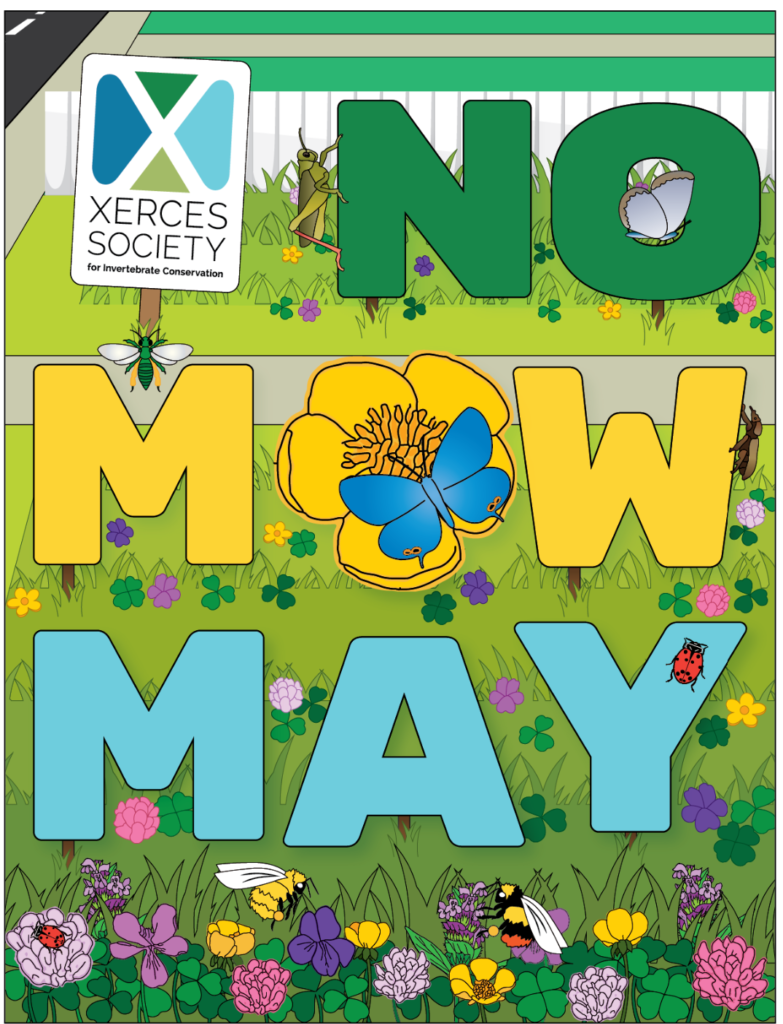NO MOW MAY!

You’ve no doubt heard the case against lawns, the country’s largest “crop.” We’ve got 40 million acres of the stuff in the US, taking up 2% of the land. All that green requires watering and mowing (which, in turn, likely involves gas fuel and its detrimental emissions). Lop off the flowers—clover, violets, dandelions, dead nettle (whose little purple heads announce they’re not dead at all) growing within those emerald blades—and you’re starving early-season pollinators from a critical source of nutrition.
At that point, from an ecological point of view, the lawn is a wasteland, assuming you’re not planning to eat it:)
And yet, some of us are attached to these expanses, whether it’s nostalgia, lack of awareness or uncertainty as to what to put in their place. If you’re not ready to turn your lawn into a wild flower meadow or pollinator garden, or can’t decide on alternative ground cover, there’s an easy intermediary step that mitigates some of mowing’s harm: Just don’t mow. For a month. For this month. It’s a thing—No Mow May.
Dirty Gaia’s jumping on the pollinator-protecting bandwagon by making No Mow May our May Nurture Nature Challenge.
The initiative started in Wales in 2019 and made the hop across the pond via Israel del Toro who teaches biology at Lawrence University in Appleton, WI. The idea has since caught on further, and a growing number of cities and towns across the country support No Mow May, as do a growing number of individuals. Big thanks to the Xerces Society and Bee City USA for spreading the word.
Just keep the lawn mower in storage for a bit and let those clover heads and violets sway in the breeze so the bees and other pollen-sharing souls can celebrate spring with the energy they need to keep our food and flowers healthy. No need to go into how, without pollinators, none of our food would grow—we know you know that! Distilling the concept down to a simple essence: let’s help the pollinators help us. And isn’t it nice to get yardwork done by not doing yardwork? This essay by Margaret Rankl in the New York Times shows how leaving even a patch of grass alone for a season can produce remarkable results.
Tag us, #dirtygaiahv, if you’re no-mowing so we can toast you! If you’re in the Rhinecliff area, we’ve got some laminated no-mow signs like the one above at Morton Library that you can pop in your yard—they give you bragging rights and also explain what less-informed passersby might consider a neglected lawn. We, of course, know better 🙂
Heads up, we’re putting the finishing touches on a lawn overhaul challenge (prizes involved!), so consider how you might transform that monocrop green of yours into something more sustainable and infinitely more rewarding. More on that shortly! —Margot Dougherty
